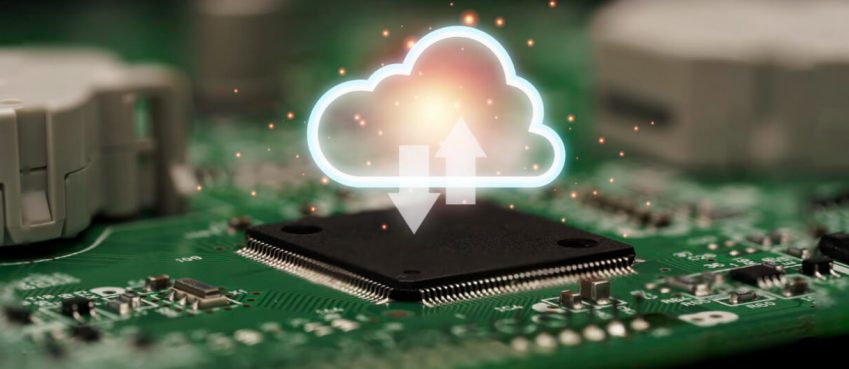
The Internet of Things (IoT) revolutionizes industries by connecting devices and enabling smarter operations. Whether you’re a startup or an established business, embarking on an IoT project can bring significant benefits, but it also involves various costs that need careful consideration. This comprehensive guide will help you understand the key factors influencing IoT project costs and provide insights to make informed financial decisions.
Understanding IoT Project Costs
The cost of developing an IoT project can vary widely depending on the project’s complexity, scale, and specific requirements. To get an accurate IoT project cost estimation, it’s essential to break down the project into its core components.
1. Hardware Costs
Sensors and Devices: The foundation of any IoT project is the hardware, which includes sensors, actuators, and other devices that collect and transmit data. The type and number of sensors needed will significantly impact the overall cost. High-quality sensors might be more expensive but can offer better accuracy and durability.
Connectivity Modules: IoT devices need to communicate with each other and the central system. This requires connectivity modules such as Wi-Fi, Bluetooth, Zigbee, or cellular modules. The choice of connectivity depends on the project’s requirements and the environment in which the devices will operate.
Gateways: Gateways act as intermediaries between IoT devices and the cloud. They aggregate data from multiple devices and send it to the cloud for processing. The cost of gateways varies based on their processing power and connectivity options.
Also read: AI Avatar 101: The Basics You Need To Know2. Software Development Costs
Embedded Software: Each IoT device needs embedded software to collect and process data. Developing this software involves programming the microcontrollers and integrating them with the sensors and connectivity modules.
Cloud Infrastructure: Data collected by IoT devices is typically stored and processed in the cloud. Costs include cloud storage, data processing, and the infrastructure needed to support the IoT application. Leading cloud providers like AWS, Azure, and Google Cloud offer IoT-specific services that can simplify development but come at a cost.
Application Development: The front-end application is what users interact with. This could be a mobile app, web portal, or desktop application. Developing a user-friendly interface and ensuring seamless integration with the backend systems can be time-consuming and costly.
According to a report by The New York Times, the growing demand for IoT applications has led to an increase in specialized IoT development services, which can help streamline the development process but also add to the overall cost.
3. Data Management Costs
Data Storage: IoT projects generate vast amounts of data that need to be stored securely. The cost of data storage depends on the volume of data and the storage solution used. Cloud-based storage solutions offer scalability but can become expensive as data volumes grow.
Data Analytics: Extracting valuable insights from IoT data requires advanced analytics tools. Implementing data analytics solutions can involve significant costs, including software licenses, data processing, and integration with other systems.
4. Security Costs
Device Security: Ensuring the security of IoT devices is paramount. This includes securing the hardware, embedded software, and communication channels. Implementing robust security measures can increase the cost but is essential to protect against cyber threats.
Data Security: Protecting the data collected by IoT devices involves encryption, secure storage, and access control mechanisms. Investing in strong data security measures helps prevent data breaches and ensures compliance with regulations.
Also read: 5 Best Tiktok To MP4 Download (100% Working), No SignupFactors Influencing IoT Project Costs
Several factors can influence the overall cost of an IoT project. Understanding these factors can help you plan your budget more effectively.
Project Scope and Scale
The scale of your IoT project will significantly impact costs. A small-scale project with a few devices will cost less than a large-scale deployment with thousands of devices. Clearly defining the scope and scale of your project is crucial for accurate cost estimation.
Development Timeline
The timeline for your project can also affect costs. A shorter timeline may require additional resources and faster development, which can increase expenses. Planning a realistic timeline that aligns with your budget and resources is essential.
Customization Requirements
The level of customization required for your IoT solution will influence costs. Off-the-shelf solutions may be cheaper but might not meet all your needs. Custom solutions offer flexibility but come at a higher cost due to the development effort involved.
Also read: Top 25 Digital Marketing Blogs To Follow In 2025Regulatory Compliance
Compliance with industry regulations and standards can add to the cost of your IoT project. Ensuring that your solution meets all relevant regulatory requirements is necessary to avoid legal issues and potential fines.
Managing IoT Project Costs
Effectively managing costs is critical to the success of your IoT project. Here are some strategies to help you stay within budget:
1. Conduct a Feasibility Study
Before starting your project, conduct a feasibility study to assess the technical and financial viability. This helps identify potential challenges and estimate costs more accurately.
2. Prioritize Features
Focus on the core features that provide the most value to your users. Prioritizing essential features helps control costs and ensures that your project delivers the desired outcomes.
Also read: Seamless AI Review: Features, Pricing, & Getting Started (2024 Guide)3. Use Agile Development
Adopting an agile development approach allows you to iteratively develop and refine your IoT solution. This helps manage costs by allowing adjustments based on feedback and changing requirements.
4. Leverage Existing Solutions
Where possible, use existing hardware, software, and cloud services to reduce development costs. Many cloud providers offer IoT-specific services that can accelerate development and lower expenses.
5. Monitor and Optimize
Regularly monitor your project’s progress and expenses. Identifying areas where you can optimize costs and improve efficiency helps ensure that your project stays on track and within budget. For a detailed breakdown of IoT project costs and further insights, you can visit IoT project cost estimation.
Also read: Top 10 AI Infrastructure Companies In The WorldConclusion
Estimating costs for an IoT project involves considering various factors, from hardware and software development to data management and security. By understanding these components and effectively managing your project, you can develop a cost-effective IoT solution that meets your business needs. Leveraging resources and expert guidance can further enhance your ability to create a successful IoT project while staying within budget. As IoT technology continues to evolve, staying informed about the latest trends and best practices will help you navigate the complexities of IoT project cost estimation and implementation.
Top 10 News
-
01
Top 10 Deep Learning Multimodal Models & Their Uses
Tuesday August 12, 2025
-
02
10 Google AI Mode Facts That Every SEOs Should Know (And Wha...
Friday July 4, 2025
-
03
Top 10 visionOS 26 Features & Announcement (With Video)
Thursday June 12, 2025
-
04
Top 10 Veo 3 AI Video Generators in 2025 (Compared & Te...
Tuesday June 10, 2025
-
05
Top 10 AI GPUs That Can Increase Work Productivity By 30% (W...
Wednesday May 28, 2025
-
06
[10 BEST] AI Influencer Generator Apps Trending Right Now
Monday March 17, 2025
-
07
The 10 Best Companies Providing Electric Fencing For Busines...
Tuesday March 11, 2025
-
08
Top 10 Social Security Fairness Act Benefits In 2025
Wednesday March 5, 2025
-
09
Top 10 AI Infrastructure Companies In The World
Tuesday February 11, 2025
-
10
What Are Top 10 Blood Thinners To Minimize Heart Disease?
Wednesday January 22, 2025







